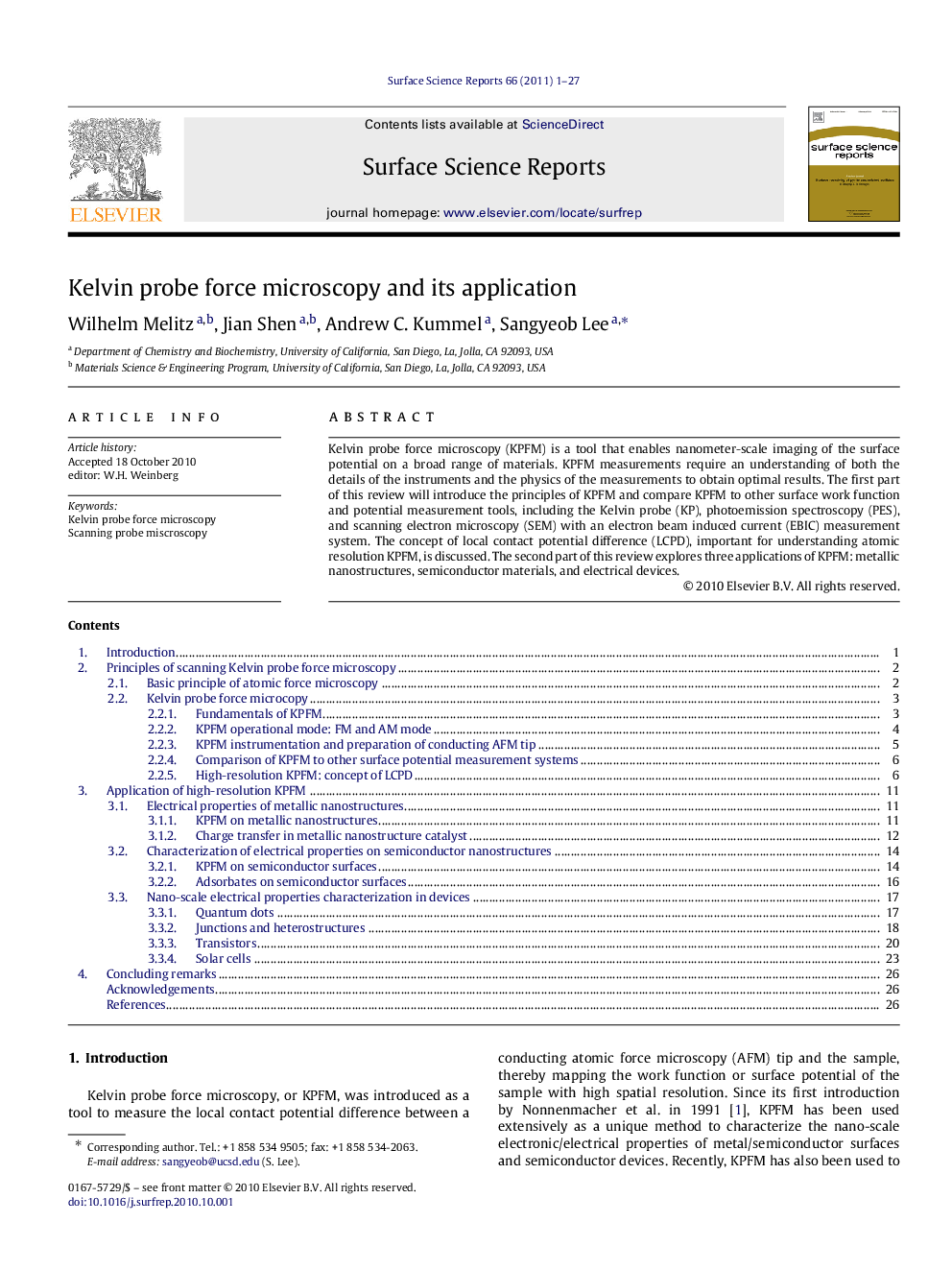| Article ID | Journal | Published Year | Pages | File Type |
|---|---|---|---|---|
| 7845344 | Surface Science Reports | 2011 | 27 Pages |
Abstract
Kelvin probe force microscopy (KPFM) is a tool that enables nanometer-scale imaging of the surface potential on a broad range of materials. KPFM measurements require an understanding of both the details of the instruments and the physics of the measurements to obtain optimal results. The first part of this review will introduce the principles of KPFM and compare KPFM to other surface work function and potential measurement tools, including the Kelvin probe (KP), photoemission spectroscopy (PES), and scanning electron microscopy (SEM) with an electron beam induced current (EBIC) measurement system. The concept of local contact potential difference (LCPD), important for understanding atomic resolution KPFM, is discussed. The second part of this review explores three applications of KPFM: metallic nanostructures, semiconductor materials, and electrical devices.
Keywords
Related Topics
Physical Sciences and Engineering
Chemistry
Physical and Theoretical Chemistry
Authors
Wilhelm Melitz, Jian Shen, Andrew C. Kummel, Sangyeob Lee,
